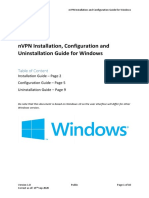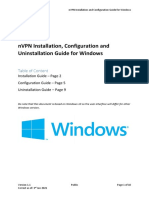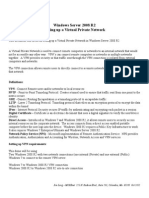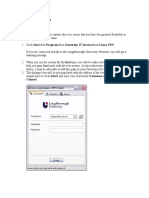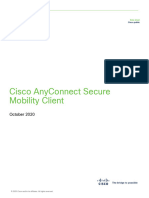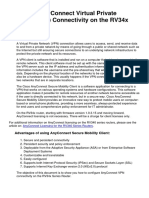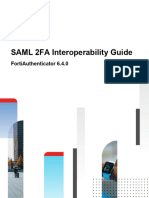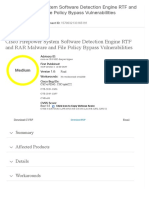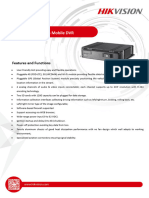Pulse
Secure VPN
Pulse Secure VPN Guide
Pulse Secure is a dynamic, integrated and easy-to-use network client that delivers anytime/anywhere
secure connectivity.
1
� Pulse Secure VPN
CONTENTS
Mac OSX
System & Hardware Requirements ………………………………………………………………………………3
Installing VPN Software (Mac OSX) ………………………………….………….………………….……………4
Configuring VPN (Mac OSX) ………………….………………………………………………………….…….……5-6
Connecting to VPN (Mac OSX) …………………………………………………….……….….…….…….………6-7
Mapping Network Drive (Mac OSX) …………………………………………………………………….……….7-9
Windows
Installing VPN (Windows)………………………….……………….……………….….……………………………10-12
Configuring VPN (Windows)……………………………………….………….………………………………….….13
Connecting to VPN (Windows)… ……….……….……….……….……….….…….……….……….………….14-16
Mapping Network Drive (Windows)………………………………………………………………………………16-19
2
� Pulse Secure VPN
System Requirements
Compatible Platforms: The
platforms listed as compatible
have not been systematically
tested by Pulse Secure QA
department in this release;
however, Pulse Secure expects
that the Pulse functionality will
work based on testing of
previous releases and knowledge
of the platform.
Qualified Platforms: The
platforms listed as qualified have
been systematically tested by the
Pulse Secure Quality Assurance
department as part of this release.
Hardware Requirements
3
� Pulse Secure VPN
Installing VPN Software (Mac OSX)
Note: You must have administrator credentials to install
the software. If you don’t have administrator credentials,
contact your support provider or owner of the computer.
1. Download the Pulse Secure Client and run
the PulseSecure.pkg installer.
2. Click Continue and then click Install.
3. Enter administrator credentials and click Install Software to begin the installation. When
completed click close.
4. Once installed, Pulse Secure will appear in the status bar.
4
� Pulse Secure VPN
5. Click the Pulse Secure icon in the status
bar and choose Open Pulse Secure.
Configuring VPN (Mac OSX)
6. Click the + in the lower left hand corner of
the configuration window to configure the
VPN.
7. Configure the VPN connection.
• Type: Policy Secure (UAC) or Connect..
• Name: UPENN VPN
• URL: sra.tss.isc.upenn.edu/collegehall
When complete, click Add.
5
� Pulse Secure VPN
8. Once added, you are ready to test the
connection.
Connecting to VPN (Mac OSX)
9. Open Pulse Secure and click Connect.
10. Check save settings, and click ok.
11. When prompted, enter your network/domain
credentials.
• Optional: Click save settings to save your
username/password; otherwise, you will be
prompted each time you connect.
6
� Pulse Secure VPN
12. When authenticated, the button will
change to Disconnect. The green arrow on
the Pulse Secure icon within the status bar
will also indicate you’re connected.
13. If your connection fails, check your settings
by clicking edit (pencil icon) and refer to
Step 7 to verify settings.
Mapping a Network Drive (Mac OSX)
14. While connected to Pulse Secure, click the
Go menu and choose Connect to Server.
(Connect to Server keyboard shortcut : ⌘+K)
7
� Pulse Secure VPN
15.Enter the server address:
smb://smith.admin.upenn.edu
• Click the + to add the address to
favorites for future use.
• Click Connect
16. Ensure that Registered User is
selected, enter your network
credentials and click ok.
17. Select your department folder
and click connect.
8
� Pulse Secure VPN
18. Once connected the folder will open and you
are able to browse the contents.
If the window is closed, you may reopen it by
locating the network icon for your
department folder on your desktop.
(Note: When your connection to the VPN is
disconnected, the icon will disappear.
19.To disconnect, click the
Pulse Secure icon in the
status bar, select your VPN
connection (UPENN VPN)
and disconnect.
Suspend: maintains VPN
authentication but breaks
the connection to your
destination.
(Choosing Exit, will close
Pulse Secure and also force the connection to close.)
9
� Pulse Secure VPN
Installing VPN Software (Windows)
20. Determine 32bit vs. 64 bit.
Note: The Pulse Secure software for Windows is available for 32 bit and 64 bit systems.
You must identify which system you’re using and download the corresponding software.
A) Checking Your Version of Windows 10
• Open the Settings app by pressing
Windows+ i,
• Click System -> About
• On the right pane, look for the
“System type” entry. It will show
you two pieces of information—
whether you’re using a 32-bit or
64-bit operating system and
whether you have a 64-bit capable
processor.
B) Checking Your Version of Windows 7 or Vista
• Click the start button, right-click
Computer, and then choose
Properties.
10
� Pulse Secure VPN
• On the System page, look for
the System type entry to see
whether your operating
system is 32-bit or 64-bit. Note
that, unlike in Windows 8 and
10, the System type entry in
Windows 7 does not show
whether your hardware is 64-
bit capable.
21.Download Pulse Secure Software. (By default, the software will save in your ‘Downloads’
folder.
Note: You must have administrator
credentials to install the software. If you
don’t have administrator credentials, contact your support provider or owner of the
computer.
22. Once the download is located, double-click
to run it.
• If prompted, click Yes to allow User
Account Control to begin the installation.
• Click Next.
11
� Pulse Secure VPN
23. Click Install
24. Click Finish
12
� Pulse Secure VPN
Configuring VPN (Windows)
25. Locate Pulse Secure [Start ->
Programs -> Pulse Secure]
26. Click the + to add a new VPN
Connection.
13
� Pulse Secure VPN
27. Configure the VPN connection.
• Type: Policy Secure (UAC) or
Connect..
• Name: UPENN VPN
• URL:
sra.tss.isc.upenn.edu/collegehall
When complete, click Add.
Connecting to VPN (Windows)
28. Click the Connect button
14
� Pulse Secure VPN
29. When prompted enter your network/domain credentials.
Optional: Click save settings to save your username/password; otherwise, you will be
prompted each time you connect
When authenticated, the button will read Disconnect. The green arrow on the Pulse Secure
icon in the system tray (lower right hand corner near the time) will also indicate you’re
connected.
15
� Pulse Secure VPN
30. If your connection fails, check your settings by
clicking edit (pencil icon) and refer to Step 25.
Mapping a Network Drive
(Windows)
31.
A) Windows 7
Click the start button,
• Right Click Computer
(Windows 7) and choose
Map Network Drive.
B) Windows 10
Click the start button,
• Right Click Computer
(Windows 7) and choose Windows 7 pictured above
Map Network Drive.
16
� Pulse Secure VPN
32. Select a letter to represent your
network drive. (Any letter can be
chosen.)
Folder: \\smith.admin.upenn.edu
Click Browse.
33. Click the arrow to the left of the folder to display available sub-folders
• When prompted, enter your network credentials.
Username: admin\Network Username
• Optional: Click Remember my credentials to save your username/password; otherwise,
you will be prompted each time you connect.
17
� Pulse Secure VPN
34. Select your
department folder and
click ok.
35.Your department
folder will
automatically display.
18
� Pulse Secure VPN
• If you close the department folder/window you can find it by clicking the start button,
then clicking computer (Windows 7) or This PC (Windows 10).
Windows 7 shown above
36.To Disconnect, open Pulse Secure and click Disconnect. Alternatively, you can locate the
Pulse Secure icon in the system tray (lower right hand corner near the time), right click
the S and choose disconnect.
19






